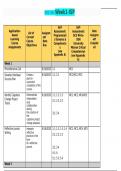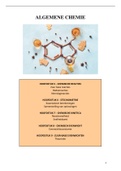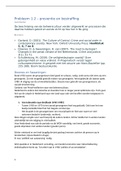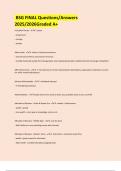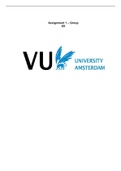PART 1: KEY IDEAS AND DEBATES ON CLASSROOM MANAGEMENT ...................... 5
Unit 1.1: Classroom Management Concepts .............................................................. 5
Unit 1.2: The Aim Of Classroom Management ............................................................. 6
1. The connection between teaching and management .............................................................. 7
2. Keeping teaching-learning environments going ...................................................................... 7
3. The educator’s management of time in the classroom .......................................................... 10
4. The socialisation process .................................................................................................... 10
5. The importance of routines ................................................................................................. 10
6. The management of technology in the classroom ................................................................. 10
Unit 1.3: Approaches to classroom management...................................................... 11
Unit 1.4: Management functions in the classroom .................................................... 14
PART 2: DIFFERENT ROLES OF THE EDUCATOR IN THE CONTEXT OF CLASSROOM
MANAGEMENT ................................................................................................. 19
MANAGEMENT ROLES AND STRATEGIES ............................................................ 20
Unit 2.1: The educator as leader .............................................................................. 20
Unit 2.2: The educator as planner ............................................................................ 21
Planning teaching at diEerent levels ......................................................................................... 21
Unit 2.3: The educator as organiser .......................................................................... 23
Unit 2.4: The educator as controller ......................................................................... 23
Manage learner motivation continue here ................................................................................ 23
Manage cooperative learning ................................................................................................... 24
Manage learner discipline ....................................................................................................... 25
Unit 2.5: Role of learners ......................................................................................... 27
Learner motivation .................................................................................................................. 27
Understanding the learning phenomenon ................................................................................ 27
Applying cooperative learning models ...................................................................................... 27
Utilising diversity in the classroom ........................................................................................... 28
Unit 2.6: Role of parents .......................................................................................... 30
An integrated model for engaging parents in their children’s education ...................................... 30
Strategies for conducting interviews with parents ..................................................................... 30
Ways to evaluate the success of eEorts to engage parents ........................................................ 31
The nature of collaboration with parents .................................................................................. 31
Communicating eEectively with parents .................................................................................. 31
Barriers to collaboration with parents ...................................................................................... 32
PART 3: MANAGEMENT STRATEGIES IN A SOUTH AFRICAN CLASSROOM ............. 34
FUNCTIONS OF CLASSROOM MANAGEMENT ........................................................... 34
Unit 3.1: Planning, organising, leading, controlling ................................................... 34
Unit 3.2: Policy development and implementation .................................................... 36
Rules and procedures ............................................................................................................. 36
Developing positive classroom rules ........................................................................................ 36
Participation of learners .......................................................................................................... 37
Guidelines for setting rules ...................................................................................................... 37
Managing learner behaviour in the classroom ........................................................................... 38
Unit 3.3: Communication in the classroom ............................................................... 39
2
, What is communication .......................................................................................................... 39
Methods of communication..................................................................................................... 39
Barriers to eEective communication ........................................................................................ 42
Guidelines for eEective communication ................................................................................... 43
Unit 3.4: Decision-making ....................................................................................... 43
Five unscientific or irrational approaches to problem-solving .................................................... 44
Steps in the decision-making and problem-solving process ...................................................... 44
Unit 3.5: Learner motivation and participation .......................................................... 46
LEARNER MOTIVATION ............................................................................................................ 46
Unit 3.6: Teaching large classes ............................................................................... 48
Unit 3.7: Democratic management of learning environments that are safe, promote
learning and foster creative and critical thinking (creating a positive learning climate)52
Building stages for a positive classroom climate ....................................................................... 53
Unit 3.8: Ethical and sensitive resolution of conflict situations within classrooms ..... 55
MANAGING CONFLICT AND BECOMING ASSERTIVE................................................................. 55
CONFLICT MANAGEMENT STYLES ........................................................................................... 56
Unit 3.9: Assisting learners to manage themselves, their homework, their time and
resources ............................................................................................................... 59
Unit 3.10: Disciplining learners in ways that are firm and fair and promote growth ..... 60
DISCIPLINE ............................................................................................................................ 60
Unit 3.11: EYective classroom administration .......................................................... 62
MANAGING CLASSROOMS THROUGH EFFECTIVE ADMINISTRATION ........................................ 62
Unit 3.12: Managing relationships ............................................................................ 67
ESTABLISHING POSITIVE EDUCATOR-LEARNER RELATIONSHIPS .............................................. 67
PART 4: LEGAL PROVISIONS IMPACTING ON CLASSROOM MANAGEMENT........... 69
Unit 4.1: Analyse, make and implement legal documents ......................................... 69
MAKING, ANALYSING AND IMPLEMENTING POLICIES .............................................................. 69
Making policy.......................................................................................................................... 69
Analysing policy ...................................................................................................................... 70
Implementing policy ............................................................................................................... 70
Unit 4.2: Learner safety ........................................................................................... 71
The law of delict and safety in classrooms ................................................................................ 71
Negligence ............................................................................................................................. 72
Contributory fault ................................................................................................................... 74
Unit 4.3: Learner discipline ...................................................................................... 75
CLASSROOM MANAGEMENT AND DISCIPLINE......................................................................... 75
THE 20-STEP DISCIPLINE MODEL ............................................................................................ 77
Unit 4.4: HIV/AIDS ................................................................................................... 83
HIV/AIDS AND SAFE CLASSROOMS ......................................................................................... 83
Testing .................................................................................................................................... 85
Universal infection control measures ....................................................................................... 85
Unit 4.5: Sexual misconduct .................................................................................... 87
CLASSROOMS FREE FROM SEXUAL MISCONDUCT .................................................................. 87
The Constitution and sexual misconduct ................................................................................. 88
Legislation regulating sexual misconduct ................................................................................. 88
CLASSROOM MANAGER EMPLOYMENT .................................................................... 97
Unit 4.6: The Employment of Educators Act 76 of 1998 .............................................. 97
South African Council for Educators (SACE) requirements ........................................................ 97
ADDITIONAL INFORMATION PERTAINING TO SACE................................................................... 98
3
, Basic competences of a beginner teacher ................................................................................ 99
Integrated Quality Management System (IQMS) requirements ................................................. 100
Unit 4.7: The Employment of Educators Act 76 of 1998 on termination of services ..... 102
ADDITIONAL INFORMATION NOT CONTAINED IN STUDY GUIDE ................................ 107
THE IMPORTANCE OF EDUCATION LAW FOR CLASSROOM MANAGERS .................................. 107
EDUCATION LAW SOURCES .................................................................................................. 109
LEGAL REQUIREMENTS FOR VALID (JUST) ADMINISTRATIVE ACTION ....................................... 111
4



